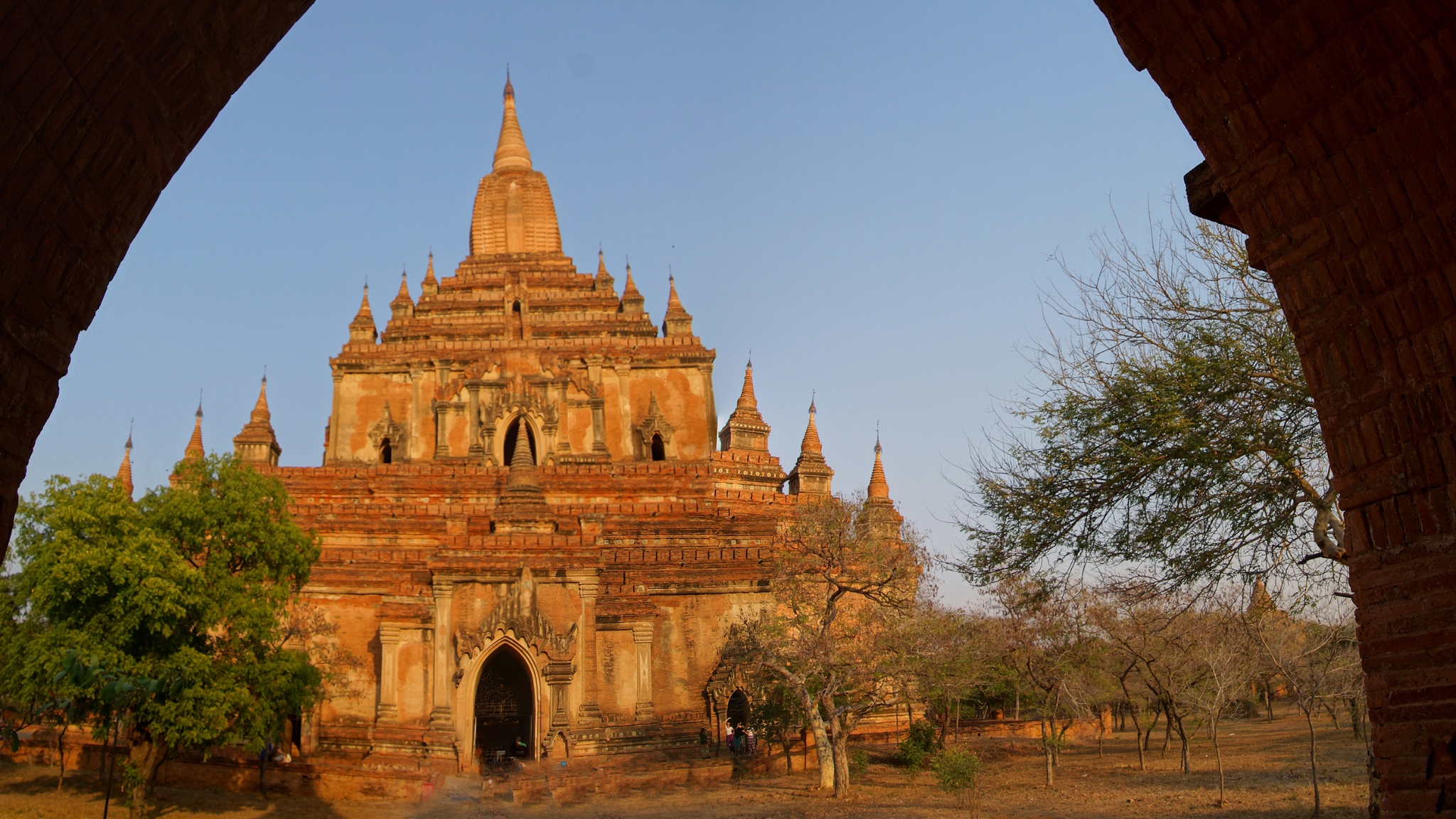Htilominlo Temple
Bagan, with its myriad well-preserved temples, epitomizes Myanmar's rich cultural and architectural heritage. Among them, Htilominlo Temple stands as a testament to intricate craftsmanship and spiritual devotion, inviting visitors to delve deeper into its historical and cultural significance.

Htilominlo Temple
Overview
- Location: 5VC9+82 Bagan, Myanmar
- Opening Hours: 06:00 - 21:00 daily
Htilominlo Temple, a significant Buddhist site in Bagan, Myanmar, was constructed during the 13th century under King Htilominlo's rule. Renowned for its stunning architecture and intricate detailing, it stands as the final testament to traditional Myanmar temple design in the region. Despite enduring damage from earthquakes and natural calamities over time, ongoing restoration endeavors have safeguarded its historical and cultural importance. Today, it remains a favored spot for tourists and pilgrims exploring the Bagan Archaeological Zone.

Majestic Myanmar Architecture Of The Temple
Note: To enter all the Bagan Temples, tourists are required to purchase a ticket. The ticket for the Bagan Archaeological Zone costs 25,000 Kyats (equivalent to US $12) per person and is valid for three days. It is essential to keep the ticket with you as it may be checked randomly at the temples. Tickets can be bought either at the Nyaung-U Airport or before entering the Bagan Archaeological Zone. Typically, buses halt at the checkpoint where tickets are available for purchase.
Things To See When Visiting
Architecture of the Htilominlo
The architecture of this temple reflects the late Bagan period. Built primarily from bricks, Htilominlo was initially covered with white stucco, remnants of which remain today. Its stucco features intricate carvings portraying mythological creatures such as Makara sea beasts and ogresses. Positioned on a low platform, the temple follows a symmetrical layout. The sizable lower cube is surmounted by three diminishing terraces, while the smaller upper cube features another three terraces, each adorned with small stupas at its corners.

Admire The Ancient Decorative Motifs
Inside the Temple
The entrances leading to the inner sanctuary are adorned with arched recesses containing small Buddha images, while four large gilded Buddha statues grace each floor, each facing a cardinal direction. The intricately carved doorways leading to the sanctuary exemplify Myanmar's meticulous craftsmanship, with ancient horoscopes painted on the walls for protection. Within the temple, beautiful murals and frescoes depict Buddhist scenes in various colors, though some have notably faded.

Isolated Golden Buddha In Each Floor
How To Get There
- By Air: The nearest airport to Bagan is Nyaung-U Airport (IATA: NYU), which is approximately 11 kilometers (about 6.4 miles) away from Bagan city center. There are several airlines that operate flights to Bagan from major cities like Mandalay and Yangon. The cost of a flight between domestic cities is generally from US $50 to $150.
- By Taxi: Taxis often operate without taximeters, requiring passengers to negotiate fares with drivers before starting the journey. Typically, rides to local attractions within the city cost around 2,000 Kyats (US $1). These taxis are mainly privately owned and also offer charter services. The usual rate for chartering a taxi for a day in Bagan and Mandalay is approximately 30,000 Kyats (US $14.3).
- By Motorbike: Motorbike is also another option for traveling around the city. Renting a bike is an incredibly convenient option for exploring, and many hotels offer bike rental services to guests. Typically, the cost ranges from 1,000 to 2,000 Kyats per day (US $0.5 - $1), depending on the type of bike and the duration of rental.
Visit Nearby Attractions
Ananda Pagoda
- Location: 5VC9+82 Bagan, Myanmar
- Opening Hours: 08:00 - 20:00 daily
Situated in Old Bagan, the Ananda Pagoda stands out as one of the most magnificent and renowned Buddhist monuments in Bagan. Constructed in 1090 under the rule of King Kyanzittha, the temple features a unique cruciform design with multiple terraces. Its imposing 55-meter-high stupa, adorned with gold, makes it easily recognizable from a distance.

Ananda Pagoda
Shwezigon Pagoda
- Location: 5VWV+4H Nyaung-U, Myanmar
- Opening Hours: 05:00 - 21:00 daily
Shwezigon is a golden pagoda in Bagan, resembling Yangon's Shwedagon Pagoda. It was finished under King Kyanzittha's rule (1084-1113) and is Bagan's oldest temple from its initial dynasty. The pagoda boasts intricate wooden carvings, a 4-meter-tall bronze Buddha, and a massive lion statue marking its entrance. It is considered the second most significant pagoda after Yangon's Shwedagon.

Shwezigon Pagoda
Bagan Archaeological Museum
- Location: 5V94+5F2, Old Bagan, Myanmar
- Opening Hours: 08:00 - 16:30 Tuesday to Sunday
The Bagan Archaeological Museum is a significant cultural institution that showcases the rich heritage of the ancient city of Bagan. Here, visitors can explore a diverse collection of artifacts, sculptures, and relics that date back to the time of the Bagan Empire. The museum provides insight into the history, art, and architecture of Bagan, offering visitors a deeper understanding of this remarkable civilization. 
Bagan Archaeological Museum (Cre: Wikipedia)
Local Tips When Exploring
- Respectful Attire: It is important to be mindful of local sensibilities and avoid wearing revealing clothing, particularly in religious sites, as Myanmar adheres strictly to Buddhist principles. When exploring temples and pagodas, it is best to ensure that your shoulders and knees are modestly covered.
- Footwear: To honor local traditions and uphold the sanctity of the temple, visitors are expected to take off their shoes before entering, thereby contributing to the cleanliness of the sacred environment.
- Photography Etiquette: Photography is permitted, but it's important to be considerate of fellow visitors and the temple's sacredness. Avoid using flash and refrain from climbing on structures to improve your photographs.
Trip that visit Htilominlo Temple

